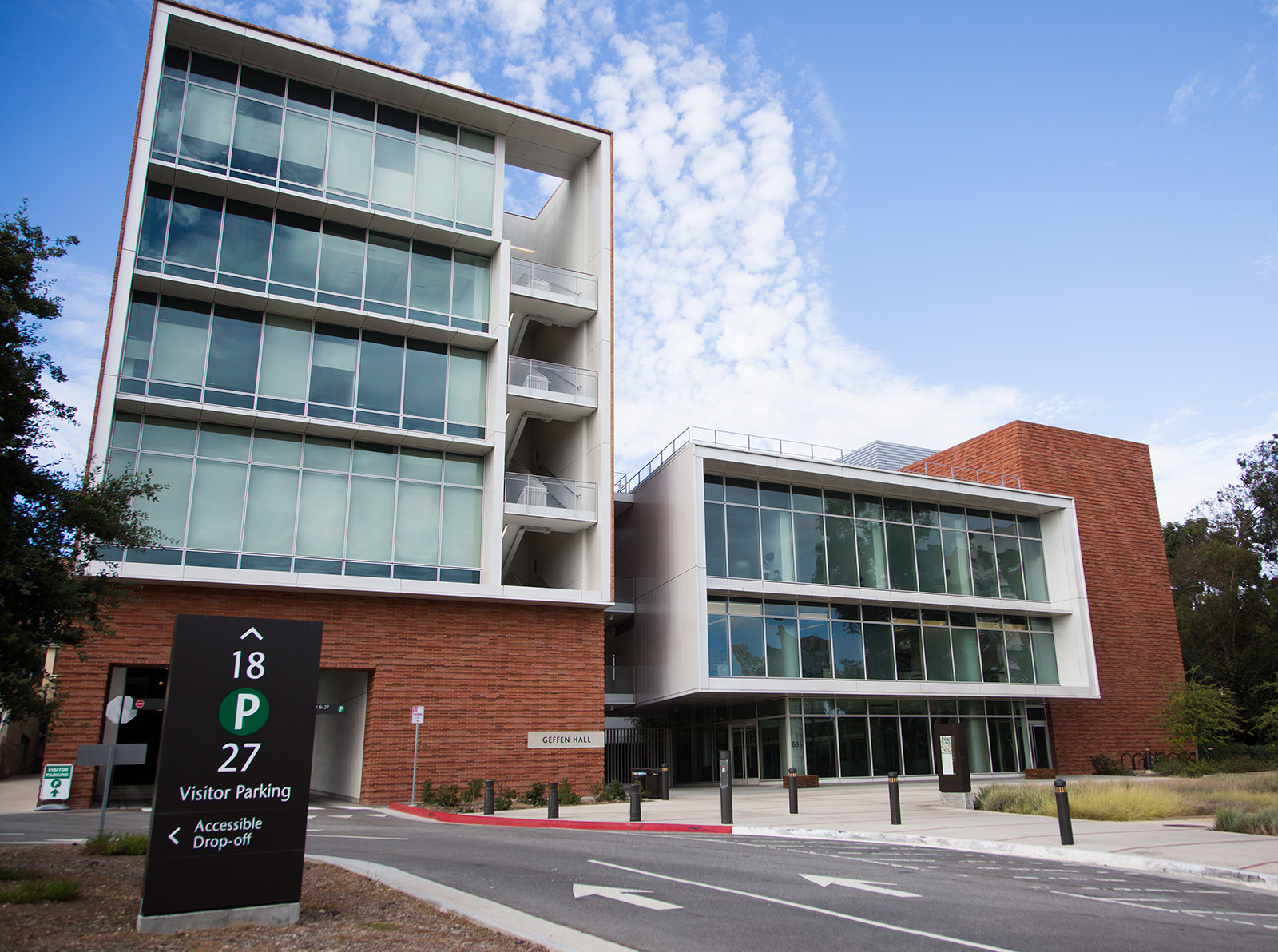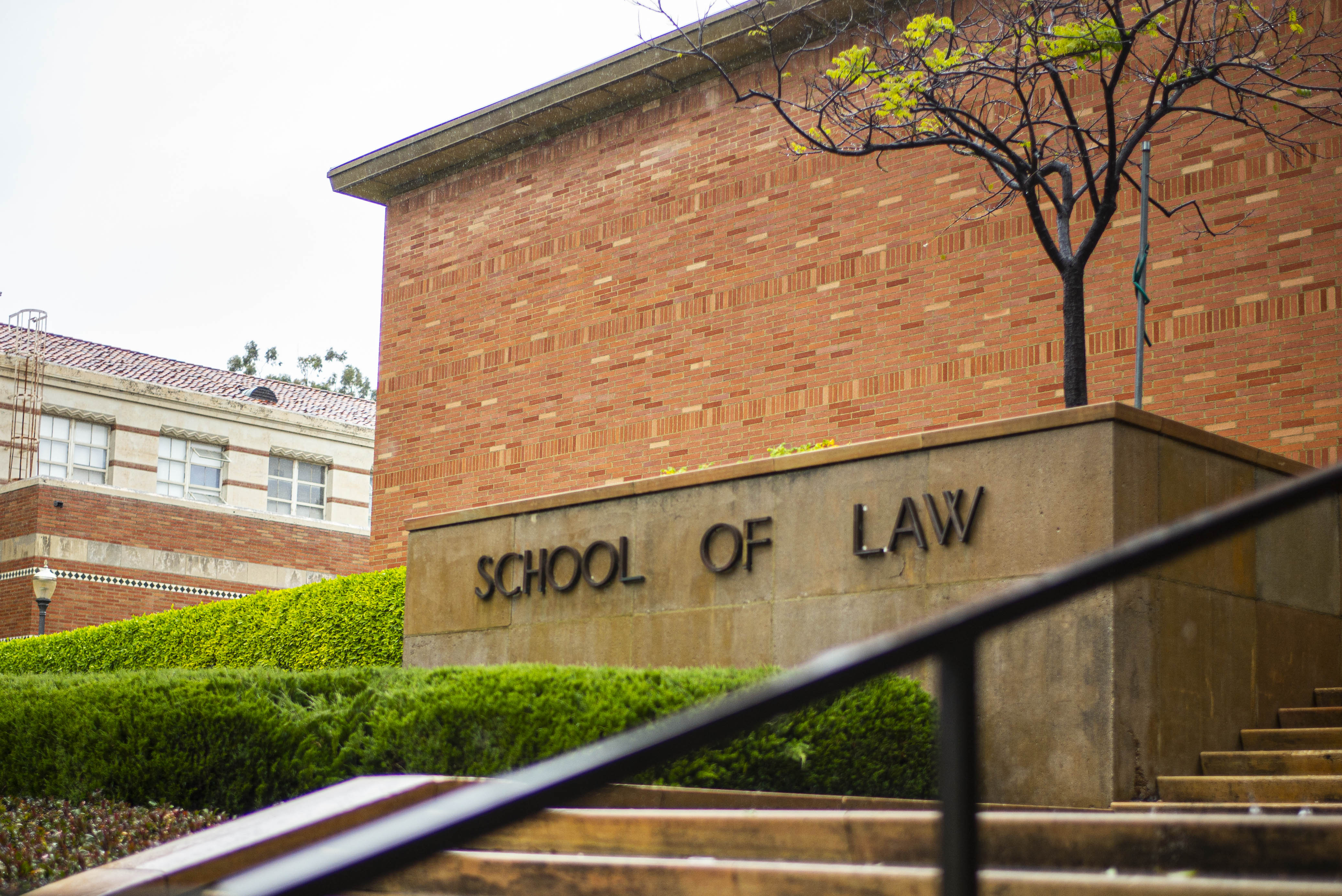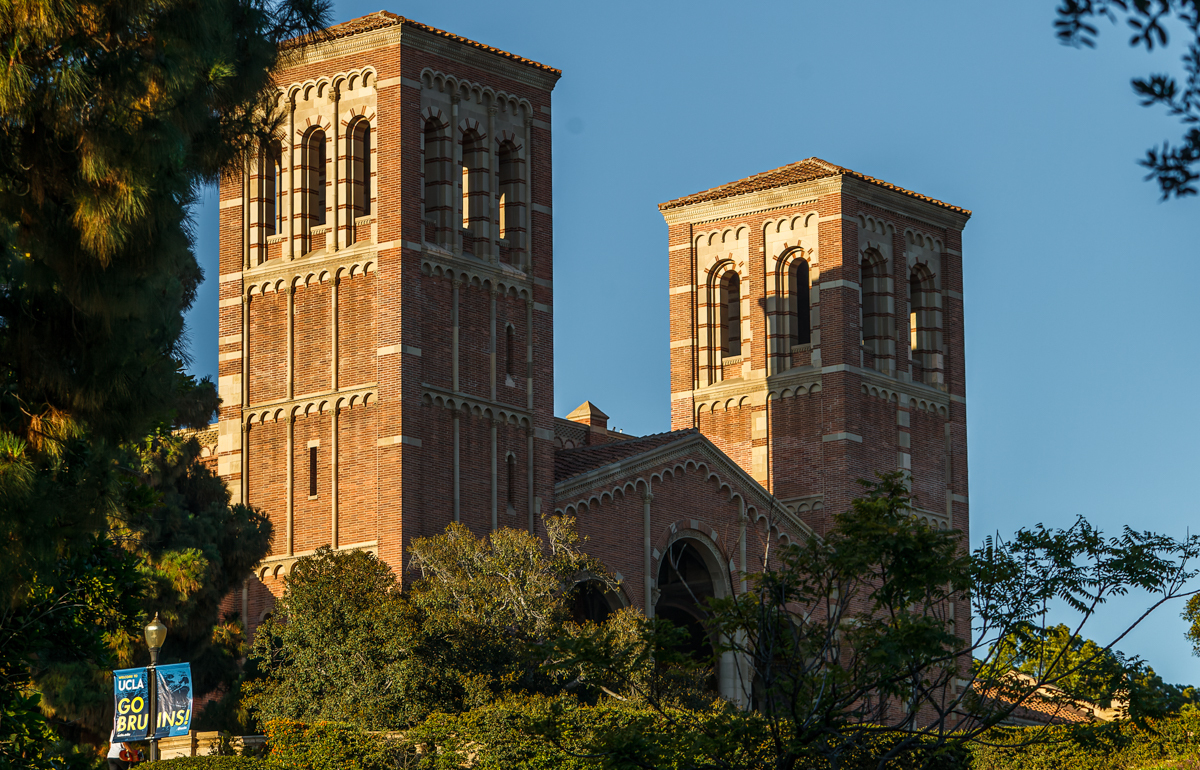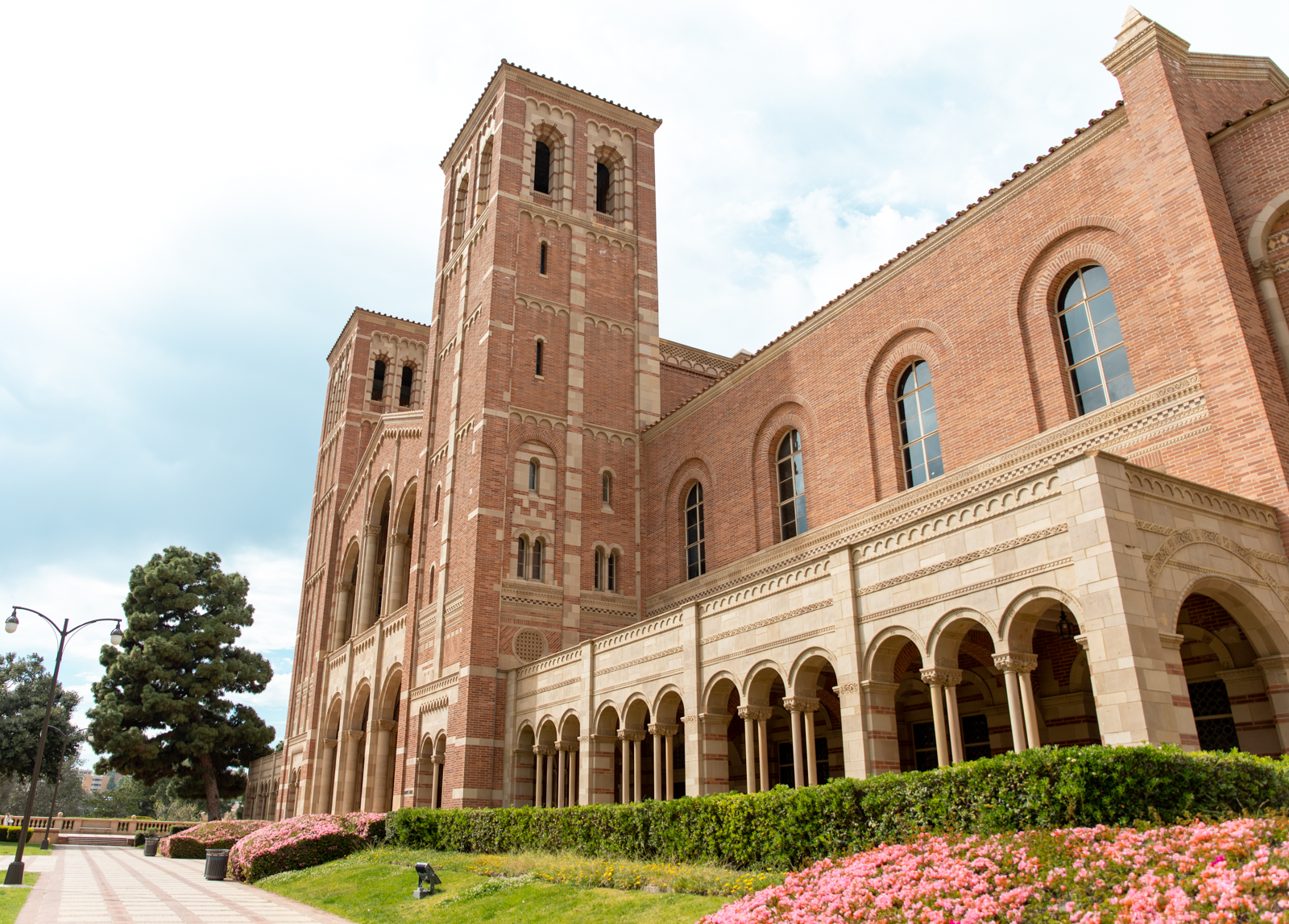A tool across eras: How college rankings continue to shape school prestige
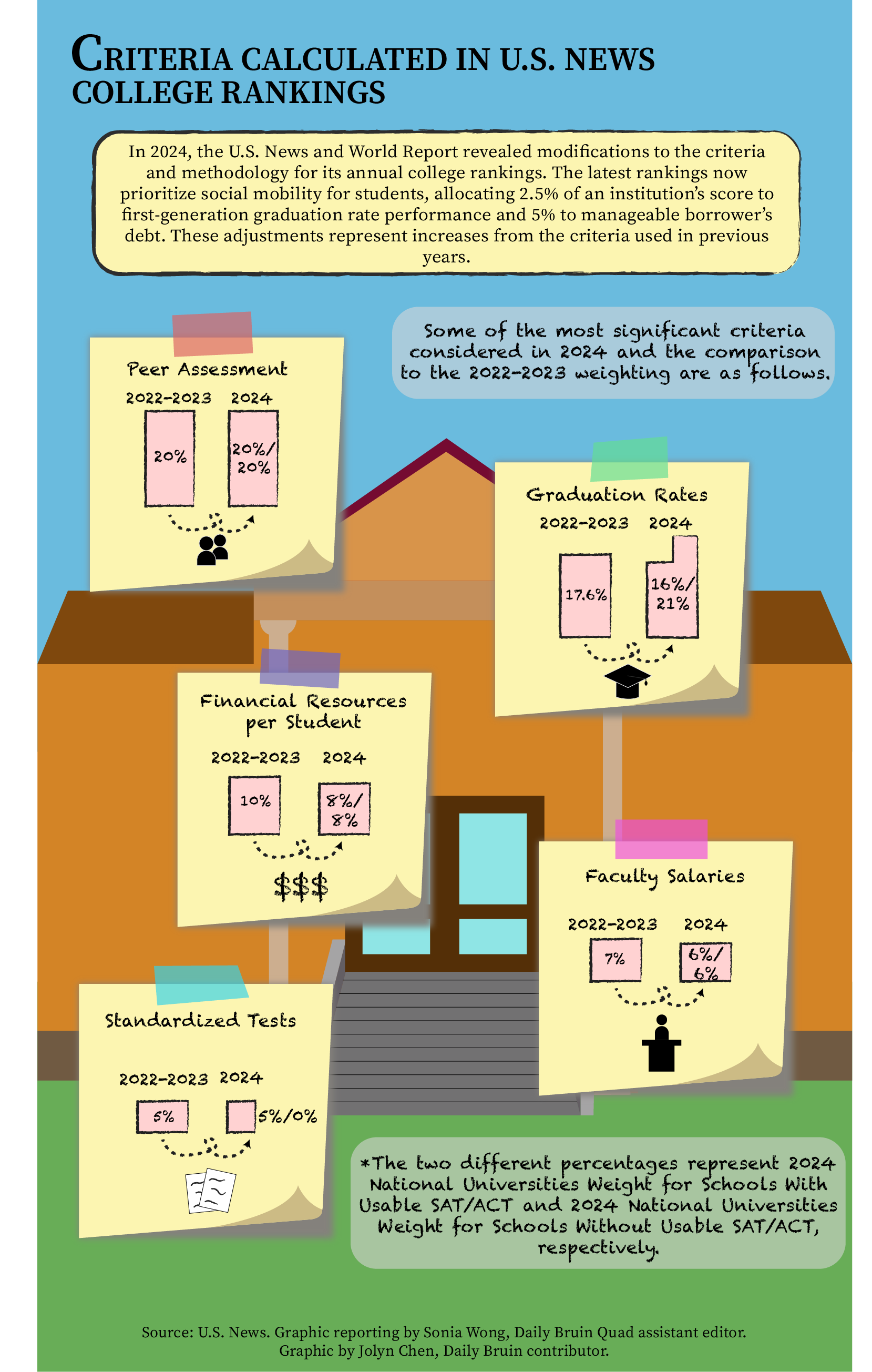
By Anna Gu
Feb. 2, 2024 8:00 a.m.
Every fall, U.S. News & World Report publishes its ranking of colleges and universities across the country.
In the 2024 edition, UCLA and UC Berkeley tied for 15th nationally, which was a jump from the previous year when both institutions were ranked 20th. Several other public universities such as UC Davis and the University of Michigan experienced a boost, while some private universities including Vanderbilt University fell in the ranks.
In its evaluation for the 2024 rankings, U.S. News & World Report announced a change in criteria and methodology that triggered a shift, resulting in a rise in the ranks of public universities. This new change starts a conversation about what students consider important factors when choosing a university, whether college rankings still affect decision-making, and the purpose higher education serves in the U.S.
According to CBS News, starting in 2024, U.S. News & World Report has shifted its focus and now prioritizes an institution’s ability to foster upward social mobility among students. This concept refers to a student’s ability to make advancements in income, education and other socioeconomic benchmarks. CBS News also found that for the U.S. News & World Report, over 50% of its ranking is now related to other outcomes, including how well an institution can help students from diverse backgrounds graduate with a reasonable amount of debt and achieve success after school.
According to UCLA Newsroom, U.S. News & World Report examines metrics such as first-generation students’ graduation rates and the number of students receiving federal Pell Grants – which award need-based grants to low-income students in financial need – in order to evaluate the social mobility score of an institution. According to the same source, approximately one-third of UCLA students are first-generation, one-third of students are given Pell Grants and one-third are transfer students. UCLA outperformed all other top 25 colleges in the country in this social mobility category, resulting in the school earning a jump in rankings.
For public institutions like UCLA, a higher ranking is beneficial, as it may help with the perception of lawmakers who may then choose to increase the school budget, said Francie Diep, a senior reporter for The Chronicle of Higher Education.
A higher ranking can result in an increased budget, and conversely, an increased budget can also lead to a higher ranking. Advancing in the ranks requires financial investment, as the factors by which schools are evaluated can be costly to enhance, Diep said. Lowering the student-faculty ratio can improve a school’s rank, but this requires hiring additional faculty, which entails additional salaries and benefits, she added.
While the relationship between a school’s budget and its rank isn’t direct, Diep said when analyzing top colleges, she noticed that many of them are very wealthy schools with big endowments that allow them to support students and help them graduate.
“It (Having wealth) lets you attract students that maybe come from already more privileged backgrounds and are … more likely to do well in school,” Diep said.
All of the factors linked with a school’s budget and financial ability, such as student-faculty ratio and graduation rates, contribute to a school’s rank, as they are some of the many factors U.S. News & World Report considers in its ranking.
The report has been published since 1983, but it and other college rankings before it have experienced noticeable changes over time, Diep said.
Katie Burns, a college counselor for the educational consultant group IvyWise, said it is human instinct to be attracted to quantitative rankings and lists, as they help people prioritize and identify the best schools from a wide variety of choices.
“Whenever you’re trying to go out and make a decision about something, I think as humans, we want whatever is the best, and an easy way to categorize what is the best is using a list,” Burns said.
Diep said the college ranking reports became a consumer product in the decades following the G.I. Bill, which opened up college to more Americans. According to the U.S. National Archives and Records Administration, the Servicemen’s Readjustment Act of 1944, more commonly known as the G.I. Bill, is an act that allocated funds to World War II veterans for expenses such as college education to help them readjust to being back in the U.S.
A study from the University of Chicago found that under the G.I. Bill, about one in eight veterans who returned to the U.S. ended up attending college, and total enrollment saw an increase of 50% from prewar levels.
Diep said as college became more widely accessible following the years after the bill, U.S. News & World Report targeted a new middle-class demographic by offering a product to individuals with limited experience or background in navigating the college landscape. U.S. News & World Report hoped to assist them in making informed choices about what school to attend and where to allocate their money, she added.
Over time, U.S. News & World Report gained trust in terms of the way it has been transparent about its methodologies, said Libby Browne, an associate director of college counseling at the Chadwick School.
“A lot of that (trust) tends to come from the same places as reputation, which is that you’ve been around long enough, and all of a sudden you have an ecosystem that you’re working from as opposed to … a random new ranking system that people don’t know or don’t have as much familiarity with or as much trust in,” Browne said.
While U.S. News & World Report has become a widely referenced ranking, there remain potential problems with how the data is produced. Despite U.S. News & World Report’s transparency in the criteria it uses for each of its annual rankings, some of the data it uses is based on the opinions of other institutions’ administrators, Burns said.
Burns said universities partake in a peer assessment, in which U.S. News & World Report sends out a survey to one to three administrators per college and asks them for their opinions on other institutions and then uses their responses to formulate that school’s ranking. According to U.S. News & World Report’s breakdown of the methodologies of its rankings, the opinions of these assessors contributed to 20% of a school’s ranking calculation.
In June 2023, Inside Higher Ed reported a trend of elite colleges opting out of submitting information to U.S. News & World Report. The same source reported that Columbia University pulled out of the U.S. News & World Report rankings entirely for its undergraduate, law, medical and nursing schools, with the university writing in a statement that the rankings didn’t fully reflect its goals. Stanford University, the University of Pennsylvania and Cornell University are also some of the schools that dropped U.S. News & World Report.
Several students have found college rankings to simply be one of many factors that help them decide which college to attend. Lucas Thai, a first-year computer science student, said when he was a high school senior, he didn’t put too much weight on rankings when choosing between his options.
Instead, Thai said he focuses more on the qualitative factors of an institution to get a better understanding of the day-to-day student experience.
“I went around and asked people that went to the schools that I got into about their experiences there,” Thai said. “I think that was the main thing that I looked at, but I definitely did look at the ranking just to see research output and how well the job placements were coming out of these different universities that I ended up deciding between.”
Thai also said it is hard to judge whether the ranking for a college is fair without having properly experienced other schools for comparison.
“I don’t really know the experiences at other colleges, but I guess for No. 15, I think that seems pretty good because I’m definitely enjoying my time at UCLA,” Thai added.
Regardless of the changing focus on college rankings among students and institutions, many schools continue to emphasize rankings because they serve as a way to highlight their communities and recognize the unique stories associated with each institution, Browne said.
“I think a lot of schools have bought into the rankings process and recognize that it’s good for visibility. It’s good for sharing their narratives and sharing their stories in different ways and being able to celebrate,” Browne added. “I think that celebration and reputation is something that a lot of schools will embrace very quickly.”



